Today “STALKER” will interview the famous Italian architect Gregorio Carboni Maestri. Gregorio works as an architect at DIA Dialectique Architectures in Brussels. Together with him we will try to understand, why the buildings are becoming abandoned, in which ways they could be transformed, and who are these people, who enjoy visiting these abandoned “sites”.
-Good afternoon Gregorio! First of all, can you tell us, why overall houses, buildings, places are becoming abandoned?
Good afternoon! The reasons could be wars, economic crises, failures, population declines, building speculations. So many possibilities. The abandoning of a building is always a failure for the community: unexpressed potential, a missed opportunity in terms of social organization. The space on the planet is limited, and a building must always be seen as a “material bank”, an economic, human energy accumulated in the form of concrete, stones… And these energies must be used, exploited, enjoyed, lived. It makes no sense to build anything if just few miles away there is something abandoned. An abandoned building is always a sign of something that does not work in a country.
-Why in some European countries there are many abandoned places, and in some less? In which countries are there more? What is the cause of all this in your opinion?
A building, an abandoned place is always a sign of social disorder; a disorganization of the ways of collective organization, of economic fragility. For instance, cities like Detroit, the historic centers of many Portuguese cities, where a large part of the historic buildings are abandoned. Or many square kilometers of Italian factories left to the invasion of weeds.
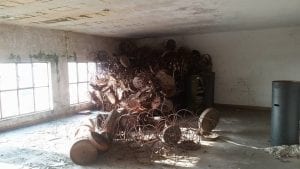
This is even more visible in post-socialist countries. In planned economy countries, architecture, the building, plays an essential role. Even in the most backward and disorganized socialist economies, such as Albania or Romania, the building of schools, universities, kindergartens, popular houses, theaters, cinemas, institutes, stations was crucial in the process of reorganizing society. It was an “ordering” of people’s lives through places and collective spaces. The economy was organized less autonomously: the state was responsible for building factories, production sites, etc. to increase wealth, redistribute work, knowledge and independence in relation to the great industrial powers of that time.
After the fall of the Berlin Wall this organization of the economy, was destroyed, in one of the biggest backward strides ever seen, in my opinion, in human history. I do not agree with the term, often used, of “implosion” of the Socialist Bloc. Actually, it was a voluntary destructuring, an invasion of the economies of these countries by the “Western powers” of which they have become real colonies. And with this systemic liquefaction of a whole slice of the world, from Europe to Asia, began the slow abandonment, dismantling and destruction of millions and millions of square meters of buildings, hundreds of thousands of structures, Ministries, organizations, industrial companies, aerospace structures, cultural and pedagogical facilities, research infrastructures, residential property… A cultural and infrastructural genocide.
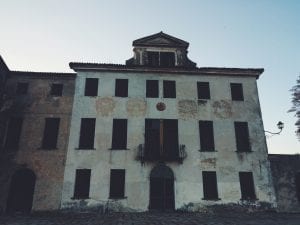
With such a cataclysm begins the destruction of entire country apparatus (education, health, culture, research, industries, etc.). Infrastructures that are no longer needed, or rather, that were not needed anymore! Such abandonment also had the role of serving as a trace, a physical, permanent testimony, of a defeat for the peoples of those countries. A way to “re-educate” the “Eastern” population. It is as when in the Middle Ages the Monarchies and the Church left the heads of the condemned to death, decapitated for several days, hung on a pole, in the middle of squares, to remind the population the price for heresy or for crimes.
This urban degradation and the abandonment of miles of buildings also serve to say to the Eastern populations, accustomed till the 1990s to have more or less everything for free and guaranteed (health, education, etc.): “Remember that all this will not more exist and will not come back, that we have won and that, now you are under the capitalist regime”, this is what the law of the jungle says. It is a process of humiliation, collective depression. It is like a stage of social destruction, it is the trace of the new regime. And this works also for the post-industrial suburbs of countries undergoing de-industrialization such as Italy or most of the United States.
-There are two different types of tourists: those who plan their trips and excursions through tourist agencies, and those who are interested in finding hidden, abandoned places. In recent times there has been a “transformation” of these abandoned places into tourist destinations, used as an attraction where, at times, it is paid for entry as if it was a museum. How can this phenomenon be explained?
The capitalist regime, at this historic stage, has an all-pervasion on a global level, penetrating in all the porous, every instance and every part of people’s lives, every aspect of everything. It’s like water, wherever it can, wherever it is located, and as in a flood, it opens new cracks, creating new opportunities for passage. The abandoned building – which is a sad element, often victim of that disorganized system – is then absorbed from ruin – by the economic system, and in many cases becomes a fetish, macabre attraction, a motif of tourist interest, becomes cool and is mercified.
Stages of this violent regime: from the suburbs of the US cities to Eastern Europe, they are re-released in the movies, in the luxury brands, Milan advertising, musicians make clips, contemporary art installs museums…. This abandonment, these “sneakers” sites are appreciated by a sophisticated sociological underpinning, from “hipster” to “bobo” (as they call them in the French-speaking world).
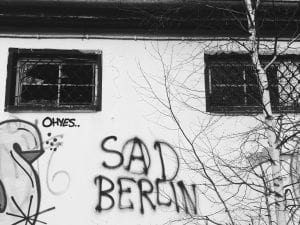
A young population grew up in the consumption, opulence, but also in the generalized and systemic defecation and liquefaction of collective aspects, which in reality reproduces, through such interest in the space of abandonment, the self-imposed pleasure of the system: adapt, find it “cool”, and make a picnic at an abandoned airport in Berlin; make a museum in a former factory, the important thing is that you do not ask who were the workers who were this or that factory, or why not that factory is abandoned, because the production of this or that asset has been delocalized in China, for example. It’s an a-critiqal fetishizing.
The abandoned Eastern building in this case is seen as a “proof” of the failed economies planning countries, and never as evidence of a crime operated by the West.
If, from one side, these places become part of the collective imagination of many, for other types of tourists or more conscious visitors, these buildings represent something of beautiful, curious, interesting anthropologically and historically: they are traces, stopped in the present, of past times.
-How else could abandoned sites be used?
As an architect, citizen, and former member of urban planning commission in Milan-Centro, as a design teacher, as a former resident of the former industrial district of Bovisa, I can only say one thing: a building must never be abandoned. Never.
The company should use any means to recover, restore, reuse buildings. It is often said that doing so is impossible, or very difficult, or economically unviable.
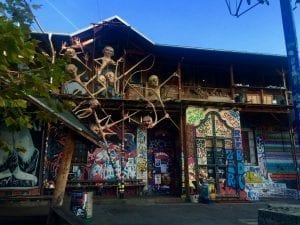
These are platitudes, repeated and resented, that the system carries. How much money is spent, and where? Why for a former museum millions are spent just for signing a star arcade, and then you do not have the resources to save an architectural heritage (for example, like that of Bovisa, swept away in less than 10 years)? These are choices that company operates.
I think a building keeps memories, and that these memories must be kept. It is a question of logic, of a collective project. Every effort must be made to re-use abandoned buildings.
A municipality, a region, a country, should not authorize any new construction while there are empty or abandoned buildings. It is nothing more than a question of economic, ecological, capital, historical, cultural logic. And Italy is one of the countries of Europe with the largest area of former abandoned industries.
When I worked with Renzo Piano on the project of the ex-Falck of Sesto San Giovanni, one of the largest steel mills in the world up to the 1980s, there was a problem of what to do with over than one million of square meters of abandoned factories. No one at that time – the state in the first place – wanted to spend the right money to recover what was one of the most extraordinary industrial spaces in Europe. Money that would go back, in terms of quality of life and/or tourism, multiplied ten times.
Instead, in a capitalist society, the decisions are taking in the regard of the next day, never for a ten-year perspective…. So it was decided to sell “the steel of 100 Years of Industrialization” in Cubic Packages to China. I fought hard inside the studio, with real internal deterrence campaigns, leaving papers and articles about Sesto’s industrial history on Renzo Piano’s desk, in order to save as much industrial archeology possible. I was alone at defending this my position. Why? Because the project took place in Paris, a long distance away, and none of those architects knew what Falck was in terms of resistance to Nazi-fascism and symbols for the left party in Milan.
Above all, those factories were seen as a problem, not a resource. I remembered that these were the last traces of a glorious resistance story….
Now little is left of the former Falck, just what the superintendence has saved. And the speculators have taken care of the rest. What remains, will be there, in the middle of a park, as a trace.
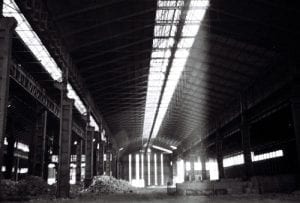
-Have you ever visited some abandoned places?
Too many, it’s been my passion since always! As a child, when I was 5-6 years old, in Rio de Janeiro, I often went out with my friends, and we went where our parents told us not to go. I lived in Santa Teresa, in a modernist quarter called Equitativa. It was surrounded by tropical forests.
One day – I do not remember how! – we found ourselves playing games and getting into a huge abandoned house. I remember it was a huge colonial house, inside the wood, I think a former hotel. It was all intact, even the bar was still full of old bottles filled with the dust. You can imagine, in a tropical country, where nature is powerful and unstoppable, what could be hiding there among all the plants and animals. We were crazy!
Walking with caution and fear, I was pretending to hear old music, the noise of the bar, the dishes, the people who chatted…. I climbed up the stairs and came face to face with a giant spider whom I knew: a black widow, one of the most dangerous in the world.
I ran away, with legs outstretched, and never came back. But, since then, I am trying to find again that feeling of discovery, because I knew that there were stories belonging to the past, and that the building is a trace of our history.
When I arrived at Bovisa, just twenty years old, to study at the Faculty of Civil Engineering of the Polytechnic, I discovered a wonderful world of beautiful factories, all abandoned just a few years before. I struggled then, quite alone, with the support of some groups like Communist Refoundation, to save them, study them, and to value them. Now they have been replaced by anonymous palaces by Italietta. For the Ex-Falck project, not far from Bovisa (Milan was surrounded by a belt of beautiful abandoned places) I saw things that everybody would have to see one day in his life: mileage factories, millions of square meters covered, pharaonic works, machines big as whole buildings….
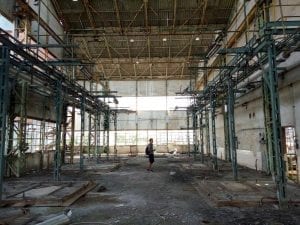
Traces of workmanship, cards and paperwork, panels for stamping the entrance and exit, and thousands of physical testimonies of the newspaper. Everything disappeared in the silence of the press and politics. Or, in the worst case, to its enthusiastic applause. When we introduced the Renzo Piano project to the citizenship, we wanted that the presentation would be made within this gigantic city of abandoned industries.
It was touching to see the old workers returning back to their factory after decades and tell what happened there, the steel castings, the dead people, the resistance….
It was one of the most beautiful places I have ever seen in my life. Now there is nothing.
– What are the reasons that make people visit abandoned buildings?
I think people look for the unusual, the different, the new, the excitement. And these places can proportion those feelings.
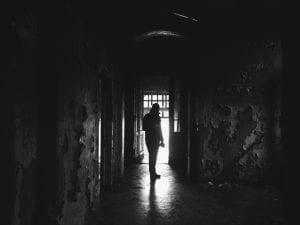
Unknowingly, I believe that people are also looking for truths, information about the points of the past that are removed from the media story: on Eastern countries, on closed industries.
There is a common feature among many of these tourist destinations, and that is the world of work (its representation, workers) that many of these places represent. For decades, they have been brainwashed by repeating mantras as “in the East there is nothing, everything is bad, nothing works, they are all unhappy”, or even today there is a voice that repeats that the things that surround us, that we buy every day, are not made by human beings; they almost make us to believe that they are magical, they appear at the supermarket already ready, and most are made by a Chinese goblin.
And I think there is a lot of curiosity, for many young people, who have grown up in a such cultural reeducation, to find places which are hidden from the system. Why are abandoned places never talked about on television, and in newspapers, magazines, and museums?
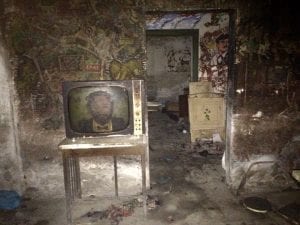
– Do you think abandoned places should be left to themselves or stored and documented?
The territory must always be governed. From the community (state, regions, municipalities) and not from the private. Territorial government means ecology, landscape, urbanism, architecture, infrastructure. But it also means artistic and cultural heritage. Everything is patrimony, even the ugly and useless things we build today will have a utility. And the state (we) must know all what we have in the territory, must understand it and know how to use it, value it. An abandoned place must be cataloged, studied, archived, documented, evaluated. But to do this, there must be a coordination between communities (citizens) and universities (public), cultural agents (televisions, museums, public service). And architects should be inside this process, instead of worrying about designing wealthy villas.
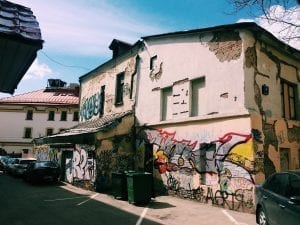
-There are many vandals attending abandoned places just to ruin them, how do you think the government should protect these “sites” from them?
We need to understand what we mean by vandalism. This is a complex topic. Often there are places that become the last available places for drug dealers, young people on the slope. But also there is an underdeveloped culture that the government does not know about or does not want to value, or give a voice.
Vandalism is always a trace of something that does not work, just like the abandoned building. A healthy society has no vandalism or abandoned factories. The Ferrania factory designed by Julio Lafuente in 1959 was abandoned in total collective oblivion. It’s a small masterpiece of architecture.
Now it has been transformed (practically destroyed, I believe), into a Volkswagen Group dealership. In such a violent way that I would call it vandalism. Current owners do not even know where they are located.
Nobody denies that, indeed. However, if you did the same thing with a church – even coarse – at the end of the nineteenth century, everyone would scream it was vandalism. It all depends on the objective with which you look at things, and for now we have the lens of the last liberalism. And under such a goal, production sites are not important because they are places of work and work is depressed. The state is complicated by myopia.
How can the state pretend not to vandalize public space while it is vandalizing the territory, enabling millions of square meters? How can the state repress when it creates conditions for such vandalism (for example, cutting funds for schooling, or not increasing the quality of TV programming for young people?)
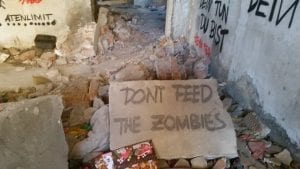
If you do not bring people democracy and quality, you can only have vandalism towards abandoned places. The state must be the state. It means to be a good friend with victims, tough with those who hurt the community. And I do not think the villain here is the small vandal, but rather that one who has moved and closed an entire factory, or who has speculated, abandoned.
– What proposals would you make to exploit these abandoned places?
If you do not have redevelopment projects or money for restoration, as it is often the case with very large structures; one of the possible solutions, especially for the Italian case, is to keep those industries where they are, intact, stable over time, and transform them into public places, for example as parks of memory. You have to think about them as covered squares.
In 2012, I proposed, with a group of architects and graduates, a project for the recovery of the ex-OTE of Bergamo. We proposed a huge public park where industrial facilities were served as a stage for timely transformations, little by little. You can safely secure metallic structures, illuminate, and make timely landscaping. Such places will be returned to the population, together with historical information.
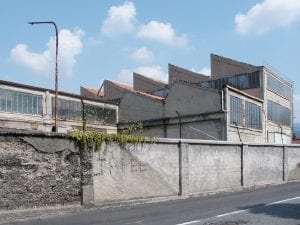
But in Italy nobody wants to do it or nobody does it decently. In Turin or Sesto (Carroponte) there have been small attempts, ridiculous if compared to what has been done, for example, at some coal mining sites in Belgium or Germany.
And this is because there is no collective memory project, but above all, memory and industrial pride, memory that needs to be removed at any cost as early as possible. The state passes most of our time to destroy the world of work, to push (or relinquish), to relocate, to say that it is better to serve society rather than a country that produces. Italy ends up hating its factories and workers who work there. Leaving alone ruins of factories.
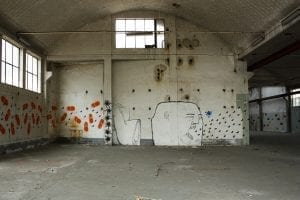
-There are some abandoned places that are privatized by individuals. Do you think it is right or should the property be entrusted to the administration of the relevant municipality?
No real property, no piece of land, should belong to anyone. Property should be collective, partially or in full. You should, of course, only pay for the use for a vitality that declines to the death of the person. Italy is the country with many owners. In much wealthier and more developed countries, almost no one is the owner because the states are investing in public housing. I say it because whoever feels might think: this is crazy, the property of the house is sacred! No. It is the land that is limited, sacred. The home is a right that should be guaranteed, like work. But not to the detriment of the common good.
Therefore, abandoned places fall even further in this right: the right to recover what is all and that, for a moment, has been privatized, exploited, often polluted, and then to be left only as a social and physical rubble.
Who leaves a factory, a given place, deserves exemplary punishments, because it is a permanent harm to the community. Now such places are often opportunities for major construction and financial speculation. This does not have to happen.
We should ensure that, if left abandoned, even in the current legal order and property, it is immediately given to the national democracies, that is to the Italian Republic, so that it falls as a punitive taxation of such abandonment. The Italian state spends nearly 80 million euros a day in military spending. Maybe it would be better to spend some of this money to re-qualify the land and its building heritage, right? One day of NATO’s budget is more than enough to recover millions of square meters of land.

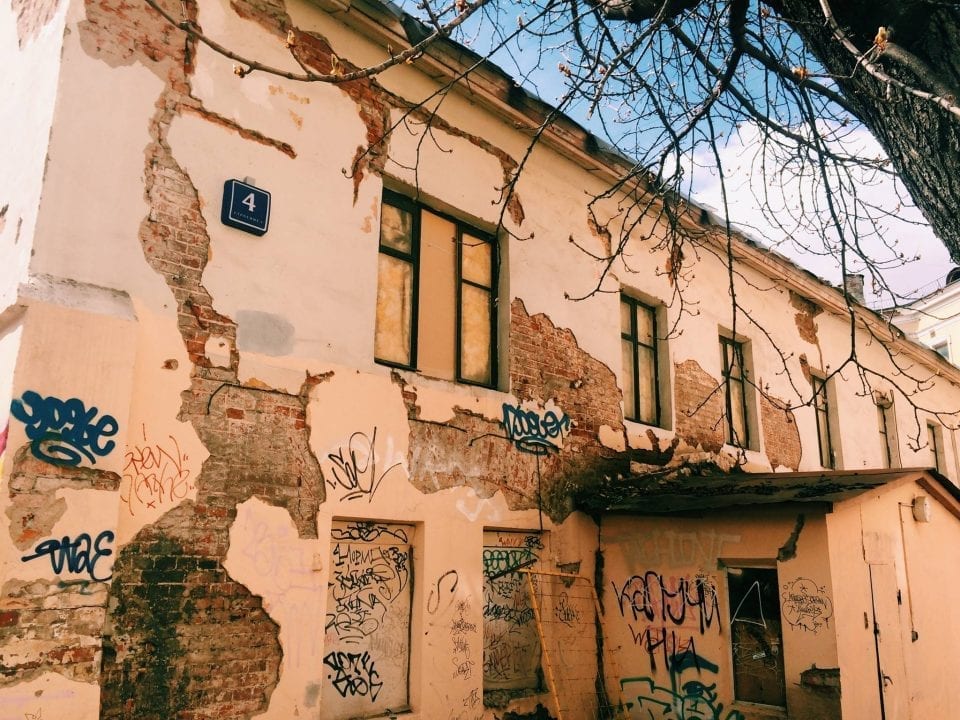
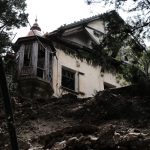
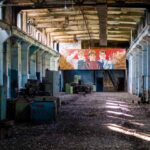

What a wonderful and enlightening story. Thank you so much to architect and Stalker. My beliefs also.
Very nice to hear! Thank you for reading!
This is a very good analysis. Great interview!
Thank you, Jeni!